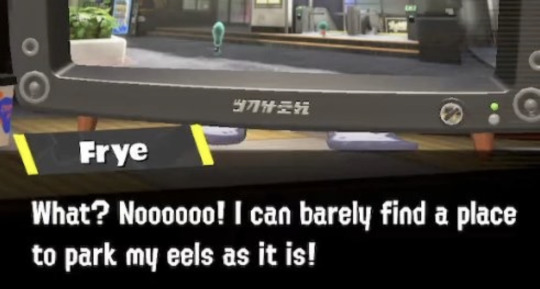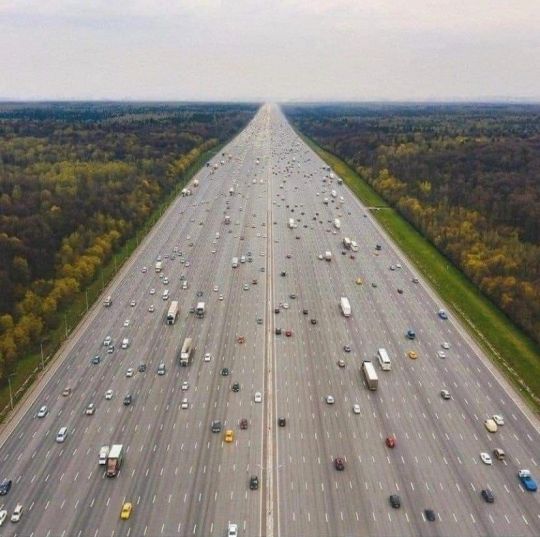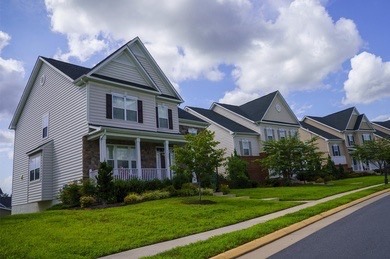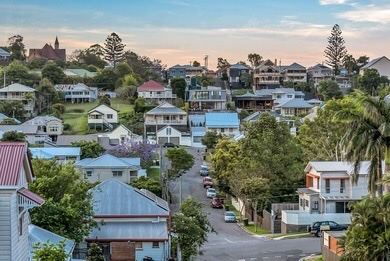#car dependent infrastructure
Text
#walkable cities#Car centric infrastructure#fuck cars#city planning#car dependency#car dependent infrastructure#capitalism#anti capitalism#Anticapitalism
1K notes
·
View notes
Text

saw this and i just felt like ruining yall’s day

8 notes
·
View notes
Video
youtube
Not Just Bikes “Why City Design Is Important (And Why I Hate Houston)” (2021)
#not just bikes#car dependent infrastructure#urban planning#city design#urban sprawl#social commentary#car dependency#city comparison#stroad#houston#texas#video#2021
8 notes
·
View notes
Text
It really bothers me how much "car culture" gets used to mean "car-dependant culture" or "car-reliant culture" or "car-dominated culture"
Many, if not most people, interpret "car culture" as meaning "preserving historic motor cars" or other adjacent activities that are largely tangential to matters of infrastructure
Saying "we need to end car culture" rather than "we need to end car-dependant culture" scans as a polemic against automobile museums etc.
Fairly often I think this forms the root of a lot of self-inflicted well poisonings for people with otherwise sensible and well-reasoned arguments for better urban infrastructure
A lot of negative comments I see in response to these arguments very clearly aren't coming from people who are passionately devoted to using fast-food restaurant drive throughs
They're coming from people who have latched on to the "end car culture" part of the argument and are interpreting the rest of what that person says through the distorted lens of "this person says they want to destroy historic vehicles"
And wanting to destroy historic vehicles is an extreme position, and indeed it's one that most urbanists and otherwise pro-walkability, pro-public-transport people would recognise as such
But through a somewhat baffling choice of words they often give the impression that that's what they want to do to a large number of people who might otherwise be far more receptive to what they have to say
#language usage#urbanism#urban planning#car dependent infrastructure#car dependant infrastructure#car dependancy#car dependency
2 notes
·
View notes
Text
Im genuinely convinced American lawmakers want to fuck cars
6 notes
·
View notes
Photo

Car(ule) 🚗
#196#r196#rule#r/196#car dependency#car dependent infrastructure is cringe#r/19684 is still open so i guess ill hang out there as well but tumblr has been pretty nice though so ill keep rule posting
1K notes
·
View notes
Text

#urban planning#meme#cars#car dependence#fuck cars#(obligatory 'cars are good for some applications but the entire pop of a city depending on em just to get a bag of groceries is wtfery')#tbh it really fucks me off that the netherlands gets dumped with snow and is cold a lot but the canadian prairies act like it's a no go lol#netherlands#comic#bicycles#cycling#ebikes#induced demand#bakfiets#public transportation#public transit#infrastructure
69 notes
·
View notes
Text
Just showed a German this image of a highway in Texas

I think they are dead
#shitpost#infrastructure#i hate car depending infrastructure#bigest road in Germany is six lane#and two of the lanes are exit ramps
7 notes
·
View notes
Text
In the bike lane strait up doingg "it"
And by "it" haha, let's justr say, freaking out :)
at the inadequate infrastructure that has been handed to me by my city :))
6 notes
·
View notes
Video
Once You See the Truth About Cars, You Can’t Unsee It
https://www.nytimes.com/2022/12/15/opinion/car-ownership-inequality.html
By Andrew Ross and Julie Livingston
Mr. Ross and Ms. Livingston are professors at New York University, members of its Prison Education Program Research Lab and authors of the book “Cars and Jails: Freedom Dreams, Debt, and Carcerality.”
In American consumer lore, the automobile has always been a “freedom machine” and liberty lies on the open road. “Americans are a race of independent people” whose “ancestors came to this country for the sake of freedom and adventure,” the National Automobile Chamber of Commerce’s soon-to-be-president, Roy Chapin, declared in 1924. “The automobile satisfies these instincts.” During the Cold War, vehicles with baroque tail fins and oodles of surplus chrome rolled off the assembly line, with Native American names like Pontiac, Apache, Dakota, Cherokee, Thunderbird and Winnebago — the ultimate expressions of capitalist triumph and Manifest Destiny.
But for many low-income and minority Americans, automobiles have been turbo-boosted engines of inequality, immobilizing their owners with debt, increasing their exposure to hostile law enforcement, and in general accelerating the forces that drive apart haves and have-nots.
Though progressive in intent, the Biden administration’s signature legislative achievements on infrastructure and climate change will further entrench the nation’s staunch commitment to car production, ownership and use. The recent Inflation Reduction Act offers subsidies for many kinds of vehicles using alternative fuel, and should result in real reductions in emissions, but it includes essentially no direct incentives for public transit — by far the most effective means of decarbonizing transport. And without comprehensive policy efforts to eliminate discriminatory policing and predatory lending, merely shifting to electric from combustion will do nothing to reduce car owners’ ever-growing risk of falling into legal and financial jeopardy, especially those who are poor or Black.
By the 1940s, African American car owners had more reason than anyone to see their vehicles as freedom machines, as a means to escape, however temporarily, redlined urban ghettos in the North or segregated towns in the South. But their progress on roads outside of the metro core was regularly obstructed by the police, threatened by vigilante assaults, and stymied by owners of whites-only restaurants, lodgings and gas stations. Courts granted the police vast discretionary authority to stop and search for any one of hundreds of code violations — powers that they did not apply evenly. Today, officers make more than 50,000 traffic stops a day. Driving while Black has become a major route to incarceration — or much worse. When Daunte Wright was killed by a police officer in April 2021, he had been pulled over for an expired registration tag on his car’s license plate. He joined the long list of Black drivers whose violent and premature deaths at the hands of police were set in motion by a minor traffic infraction — Sandra Bland (failure to use a turn signal), Maurice Gordon (alleged speeding), Samuel DuBose (missing front license plate) and Philando Castile and Walter Scott (broken taillights) among them. Despite widespread criticism of the flimsy pretexts used to justify traffic stops, and the increasing availability of cellphone or police body cam videos, the most recent data shows that the number of deaths from police-driver interactions is almost as high as it has been over the past five years.
In the consumer arena, cars have become tightly sprung debt traps. The average monthly auto loan payment crossed $700 for the first time this year, which does not include insurance or maintenance costs. Subprime lending and longer loan terms of up to 84 months have resulted in a doubling of auto loan debt over the last decade and a notable surge in the number of drivers who are “upside down”— owing more money than their cars are worth. But, again, the pain is not evenly distributed. Auto financing companies often charge nonwhite consumers higher interest rates than white consumers, as do insurers.
Formerly incarcerated buyers whose credit scores are depressed from inactivity are especially red meat to dealers and predatory lenders. In our research, we spoke to many such buyers who found it easier, upon release from prison, to acquire expensive cars than to secure an affordable apartment. Some, like LeMarcus, a Black Brooklynite (whose name has been changed to protect his privacy under ethical research guidelines), discovered that loans were readily available for a luxury vehicle but not for the more practical car he wanted. Even with friends and family willing to help him with a down payment, after he spent roughly five years in prison, his credit score made it impossible to get a Honda or “a regular car.” Instead, relying on a friend to co-sign a loan, he was offered a high-interest loan on a pre-owned Mercedes E350. LeMarcus knew it was a bad deal, but the dealer told him the bank that would have financed a Honda “wanted a more solid foundation, good credit, income was showing more,” but that to finance the Mercedes, it “was actually willing to work with the people with lower credit and lower down payments.” We interviewed many other formerly incarcerated people who followed a similar path, only to see their cars repossessed.
Did you know you can share 10 gift articles a month, even with nonsubscribers?
Share this article.
LeMarcus was “car rich, cash poor,” a common and precarious condition that can have serious legal consequences for low-income drivers, as can something as simple as a speeding ticket. A $200 ticket is a meaningless deterrent to a hedge fund manager from Greenwich, Conn., who is pulled over on the way to the golf club, but it could be a devastating blow to those who mow the fairways at the same club. If they cannot pay promptly, they will face cascading penalties. If they cannot take a day off work to appear in court, they risk a bench warrant or loss of their license for debt delinquency. Judges in local courts routinely skirt the law of the land (in Supreme Court decisions like Bearden v. Georgia and Timbs v. Indiana) by disregarding the offender’s ability to pay traffic debt. At the request of collection agencies, they also issue arrest or contempt warrants for failure to appear in court on unpaid auto loan debts. With few other options to travel to work, millions of Americans make the choice to continue driving even without a license, which means their next traffic stop may land them in jail.
The pathway that leads from a simple traffic fine to financial insolvency or detention is increasingly crowded because of the spread of revenue policing intended to generate income from traffic tickets, court fees and asset forfeiture. Fiscally squeezed by austerity policies, officials extract the funds from those least able to pay. This is not only an awful way to fund governments; it is also a form of backdoor, regressive taxation that circumvents voters’ input.
Deadly traffic stops, racially biased predatory lending and revenue policing have all come under public scrutiny of late, but typically they are viewed as distinct realms of injustice, rather than as the interlocking systems that they are. Once you see it, you can’t unsee it: A traffic stop can result in fines or arrest; time behind bars can result in repossession or a low credit score; a low score results in more debt and less ability to pay fines, fees and surcharges. Championed as a kind of liberation, car ownership — all but mandatory in most parts of the country — has for many become a vehicle of capture and control.
Industry boosters promise us that technological advances like on-demand transport, self-driving electric vehicles and artificial intelligence-powered traffic cameras will smooth out the human errors that lead to discrimination, and that car-sharing will reduce the runaway costs of ownership. But no combination of apps and cloud-based solutions can ensure that the dealerships, local municipalities, courts and prison industries will be willing to give up the steady income they derive from shaking down motorists.
Aside from the profound need for accessible public transportation, what could help? Withdraw armed police officers from traffic duties, just as they have been from parking and tollbooth enforcement in many jurisdictions. Introduce income-graduated traffic fines. Regulate auto lending with strict interest caps and steep penalties for concealing fees and add-ons and for other well-known dealership scams. Crack down hard on the widespread use of revenue policing. And close the back door to debtors’ prisons by ending the use of arrest warrants in debt collection cases. Without determined public action along these lines, technological advances often end up reproducing deeply rooted prejudices. As Malcolm X wisely said, “Racism is like a Cadillac; they bring out a new model every year.”
Andrew Ross and Julie Livingston are professors at New York University, members of its Prison Education Program Research Lab and authors of the book “Cars and Jails: Freedom Dreams, Debt, and Carcerality.”
#article#new york times#Tiktok#Jamelle Bouie#car culture#car dependency#urban design#urban planning#car trap#infrastructure#bike infrastructure#income inequality#inequality#wealth inequality#law enforcement#debt#drivers license#traffic
59 notes
·
View notes
Text
74 notes
·
View notes
Text
can’t believe hollyleaf gets her drivers license today i’m so proud of her ❤️
#lionblaze also had his drivers test scheduled for today but he broke the speed limit no less than 3 times and nearly hit a pedestrian 😔#jayfeather can’t drive but he’s anti car-dependent infrastructure anyways#wc#talon.txt
20 notes
·
View notes
Text

i made this to express my feelings sdfijffjsgur7fydts
#i could talk for hours about airplanes aviation is my biggest special interest#followed very closely by how fucking cool trains are#but fuck cars and car culture and car dependent infrastructure#yes I'm autistic why do you ask
8 notes
·
View notes
Text
it's taken me barely any road time at all to realize the way people talk about bad drivers is 100% accurate. i have gotten passed on the right multiple times while going within 5 mph of the speed limit
#we need to make infrastructure less car dependent so these people can get their licenses taken away eaaier#but also they should get them taken away anyway! i dont care waste your income on ubers and burn through favors from friebds#im not that mad about your life getting worse#when you are so willing to endanger people for no reason
4 notes
·
View notes
Text
Hey so, what are the suburbs? I thought I knew but then there’s a bunch of stuff that I see called suburbs and I guess technically apply but they’re very different from each other.


I know this ^^^ is the suburbs. Green lawns, very uniform houses, no diversity of lot types. When I hear people talk about “suburbs,” I often hear them talking about this. But sometimes when people talk about “the suburbs,” they mean this:

More trees, and the layout is a big less regular. Still green lawns, for the most part, and houses on the nicer side. But suburbs are also apparently this:


Back to the dense layout, but there’s a grid-like shape thats closer to the urban areas it surrounds, and often the houses are alongside a road that runs right up through that urban area; there’s less of a border. Oh and sometimes the suburbs are this, or this, or this, or this:





Sometimes the sidewalks are directly off the road. Sometimes there’s a grass border. Sometimes there’s no sidewalks at all. Sometimes the roads are marked. Sometimes they aren’t. Sometimes neighborhoods are on through roads, sometimes they’re dead ends, or cul-de-sacs.
I think these differences between places all considered “suburbs” is important, as well as maybe differentiating the ones that are actually “exurbs,” because they affect what we mean when we talk about car dependency, loss of biodiversity, and class differences. A suburban area with sidewalks may still be extremely car dependent, but is different than one without sidewalks. A suburban area with trees and natural plants has a different biodiversity level than ones with just grass lawns. A suburban area can encompass a range of wealth and class brackets, depending on its features.
#suburbs#surburban sprawl#urban sprawl#urban planning#city planning#city sprawl#exurbs#car dependency#biodiversity#classism#you know this also applies to redlining and racism#I’m just less educated on those aspects but feel free to chime in if you know more in that regard!#infrastructure
22 notes
·
View notes
